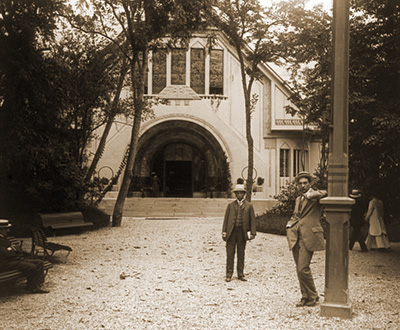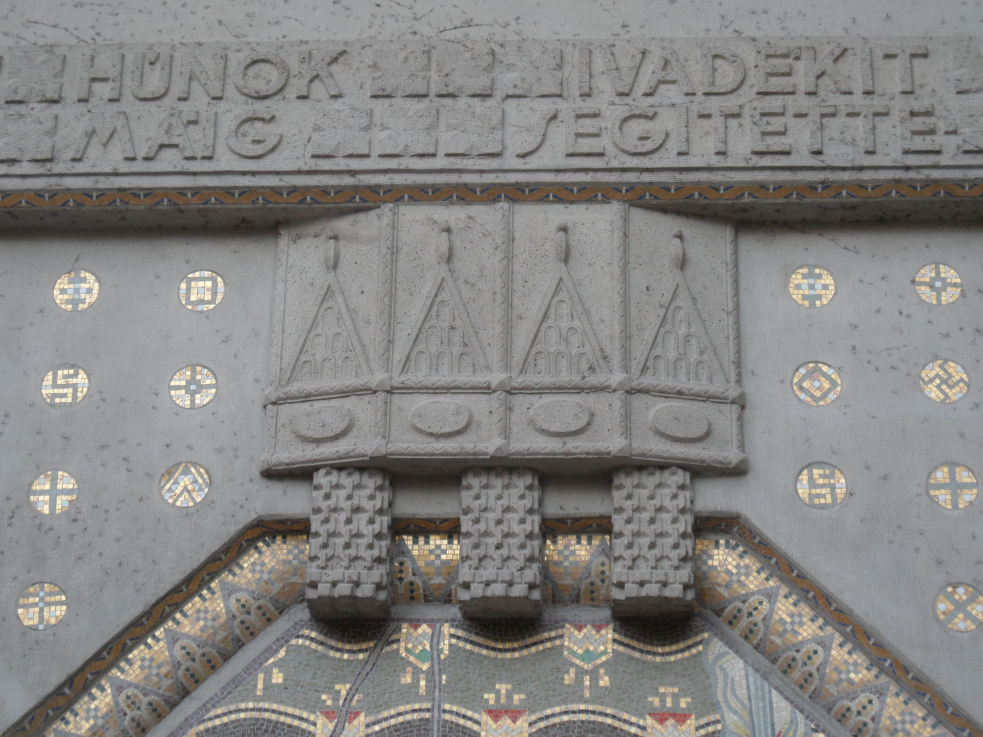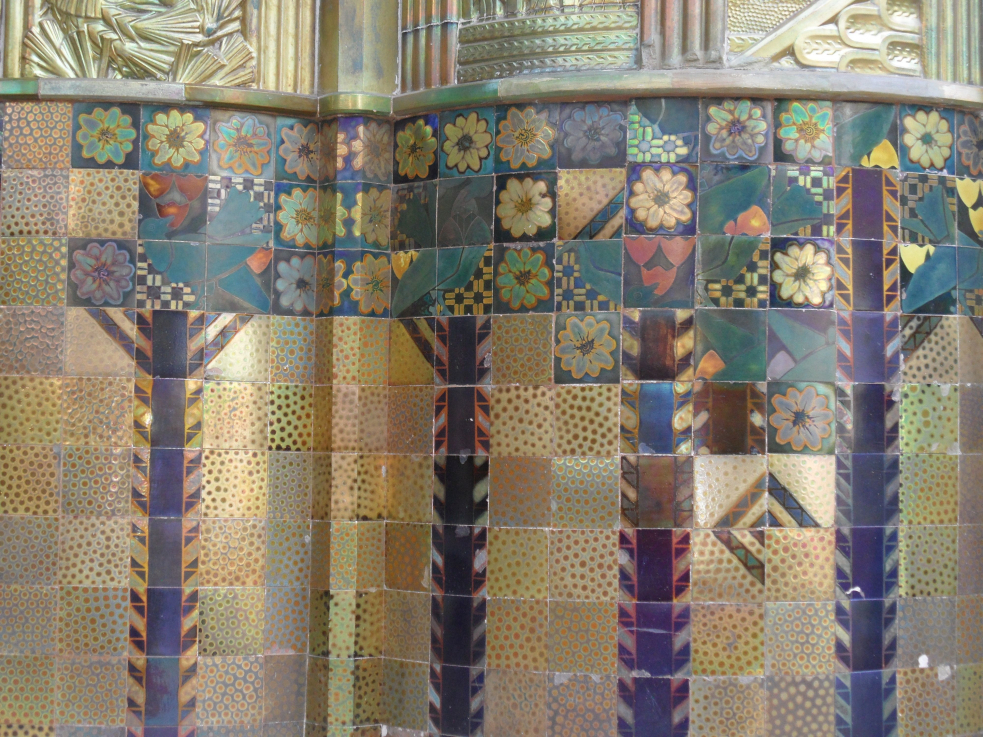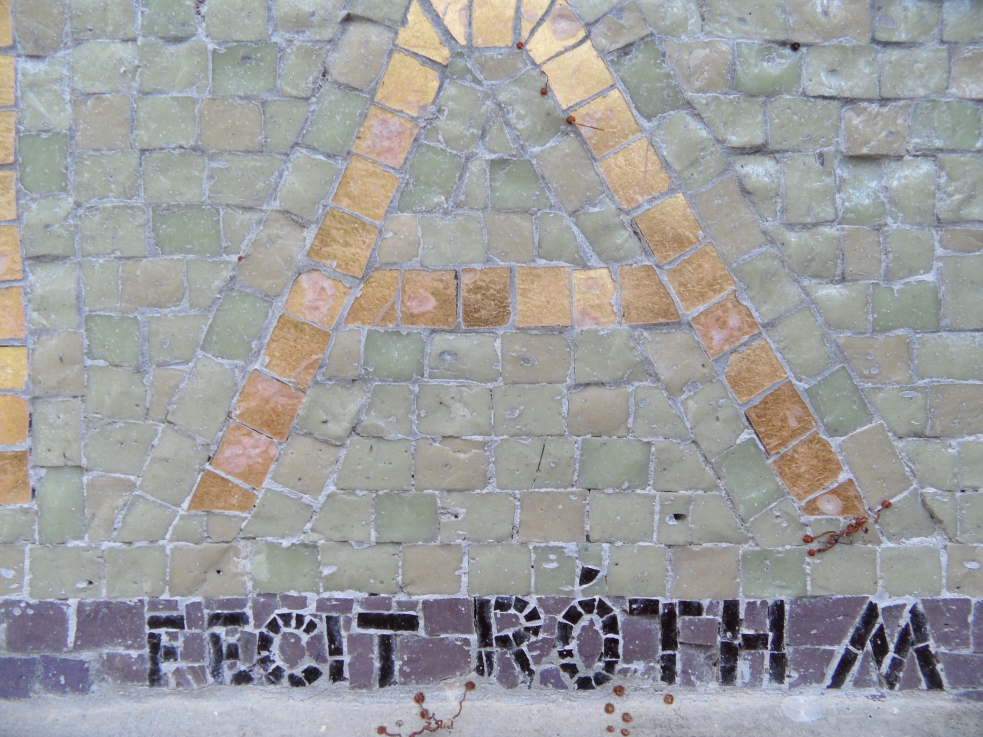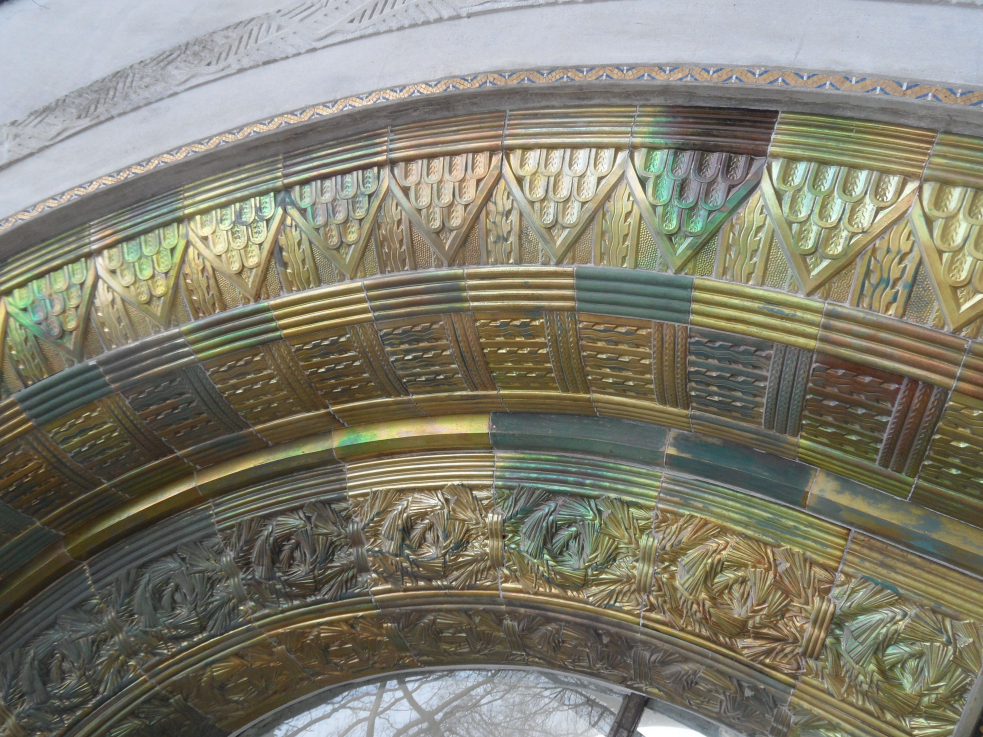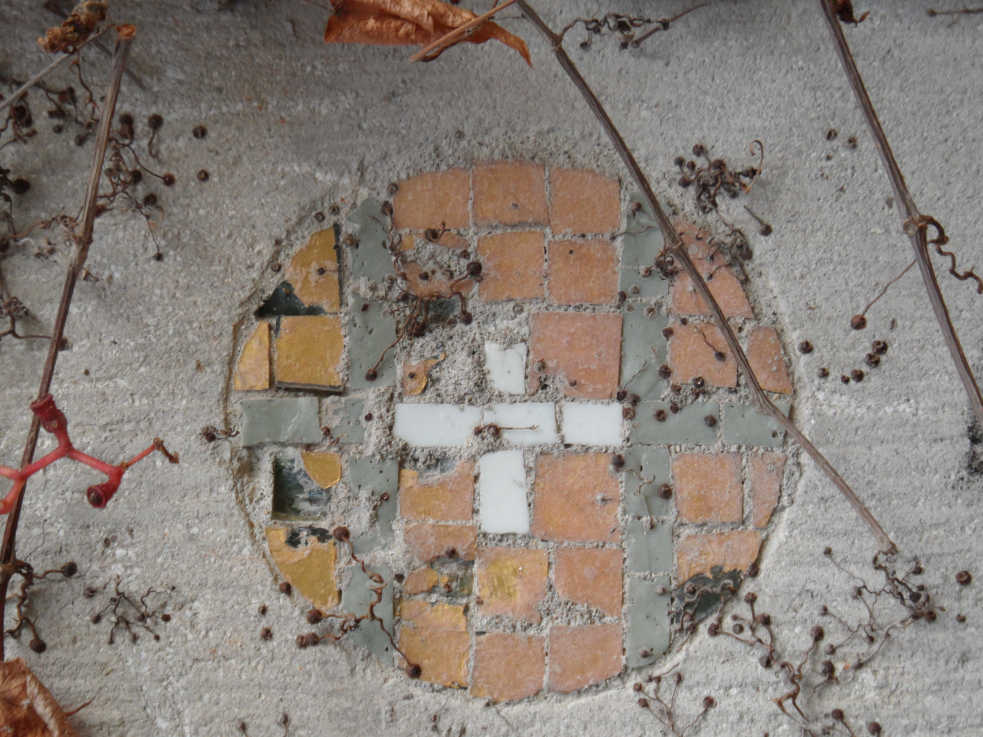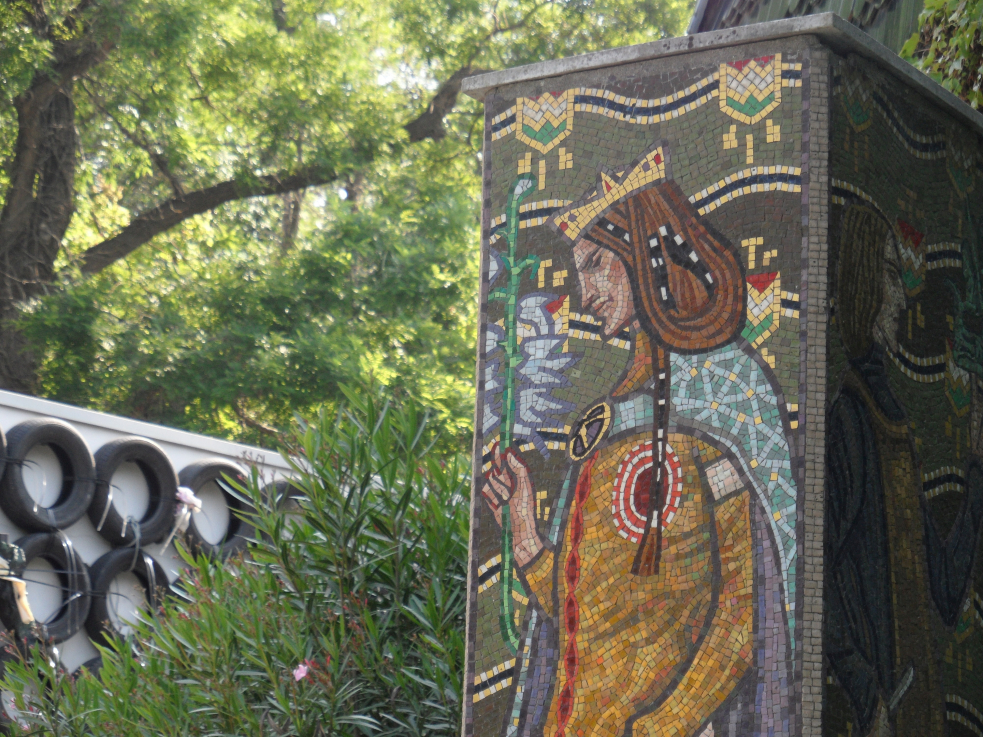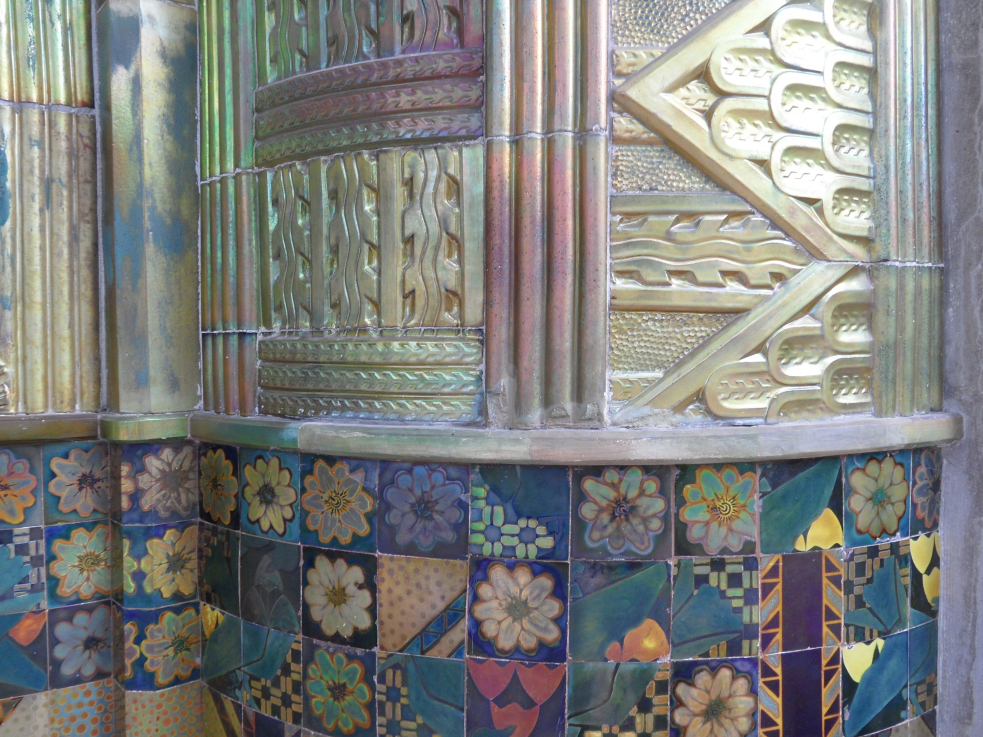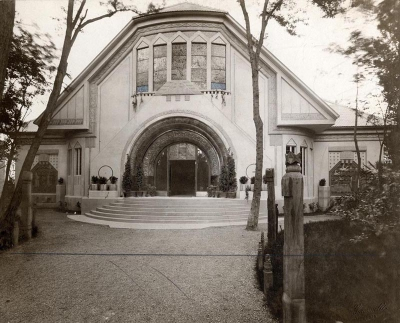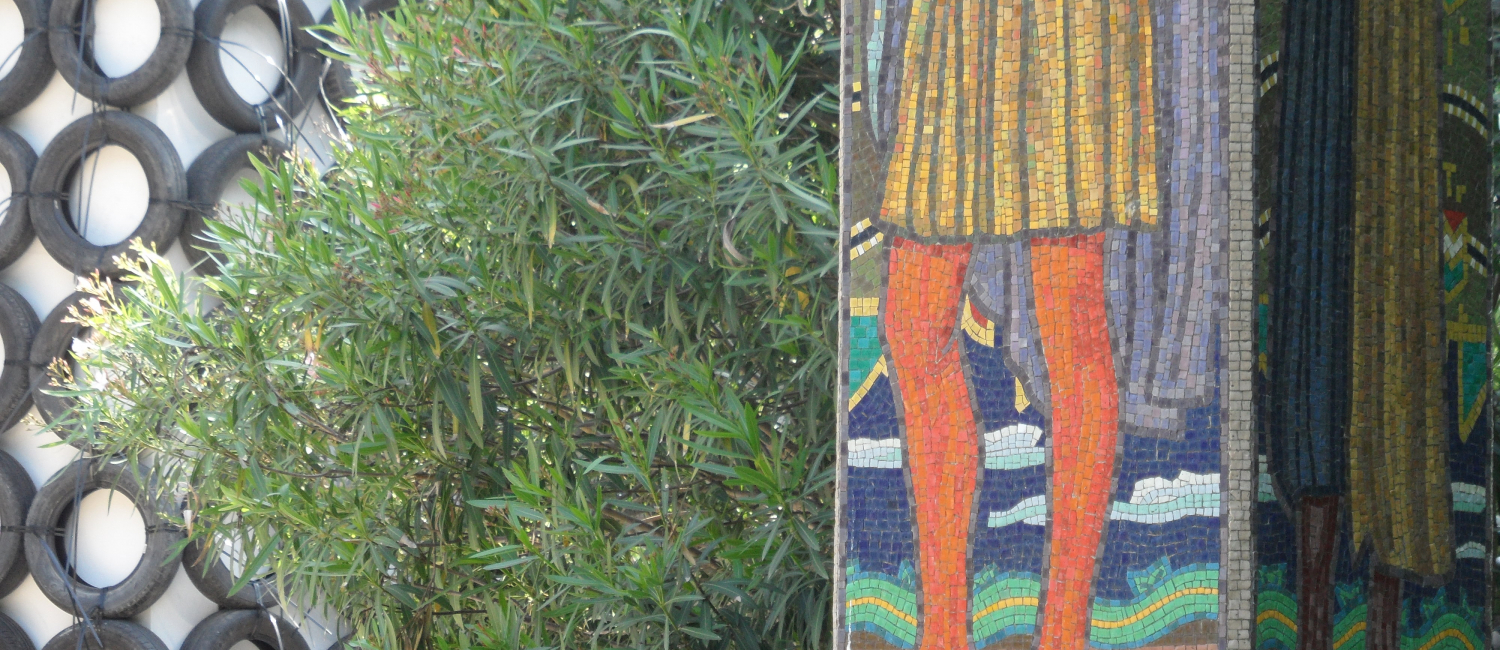History of the Hungarian Pavilion
Hungary has been a participant of the Venice Biennial right from its beginnings in 1895. After the Italian and the Belgian, the Hungarian national pavilion was the third to be built at the Giardini. Its Art Nouveau building, inaugurated in 1909, was designed by Géza Maróti (1875–1941), architect, sculptor and applied artist, who was chosen for this commission thanks to the success of his Hungarian pavilion of the Milan International Exhibition in 1906.
In line with the Gesamtkunstwerk aspirations at the beginning of the century, the two-storey building in Venice was richly decorated by the hands of renowned fine and applied artists. Its ornamentation was created by members of the Gödöllő Artists’ Colony: mosaics were designed by Aladár Körösfői-Kriesch (1863–1920), while the glass windows are the works of Sándor Nagy (1869–1950). The entrance hall was decorated with reliefs by sculptor Ede Telcs. The glazed tiles of the roof and the eosin glazed ceramics of the entrance were made in the Zsolnay factory; glass windows and mosaics were produced in Miksa Róth’s workshop. The exterior decoration as well as the iconographic program bear signs of a particular historical symbolism that intends to call forth reminiscences of an ancient Hun–Hungarian history.
After World War II the building went through rapid deterioration. In the 50’s several plans were made for its refurbishment, finally, the ones drawn by architecture Ágost Benkhard (1910–1967) was selected and carried out in 1958. During the conversion the collapsed high-pitched roof was torn down, the mosaics and the windows were walled in, the ornamentation of the entrance was plastered, and the exhibition spaces consisting of small cabinet rooms were fully reshaped. As a consequence of the modernization, the building lost its original character in order to meet the requirements of the era: it became a simple cube-shaped building with a flat roof, glass walls and an internal courtyard. From its original ornaments only the ceramic decoration of the arched portal remained. It was at this time when the mosaic column, on which the copies of the four walled-in mosaic images of the side façade can be seen, was erected behind the building.
The pavilion gained its present form in the 1990’s, when it went through a multiple-stage restoration under the direction of art historian György Sümegi. The partial reconstruction was carried out according to the plans of architect György Csete (1937–2016). In addition to uncovering and restorating the walled-in mosaics and the still extant Art Nouveau ornaments of the main façade, a new roof structure was erected as well, which is crowned by a low-pitched roof covered with Zsolnay tiles.
Since 2000, the Hungarian Pavilion has been housing annual contemporary exhibitions of art and architecture. While its Art Nouveau exterior evokes the past glamour of the building, the interior satisfies the needs of modern times.
Since 2015, the operator of the pavilion and the organizer of the Hungarian biennale participation has been the Ludwig Museum – Museum of Contemporary Art.
